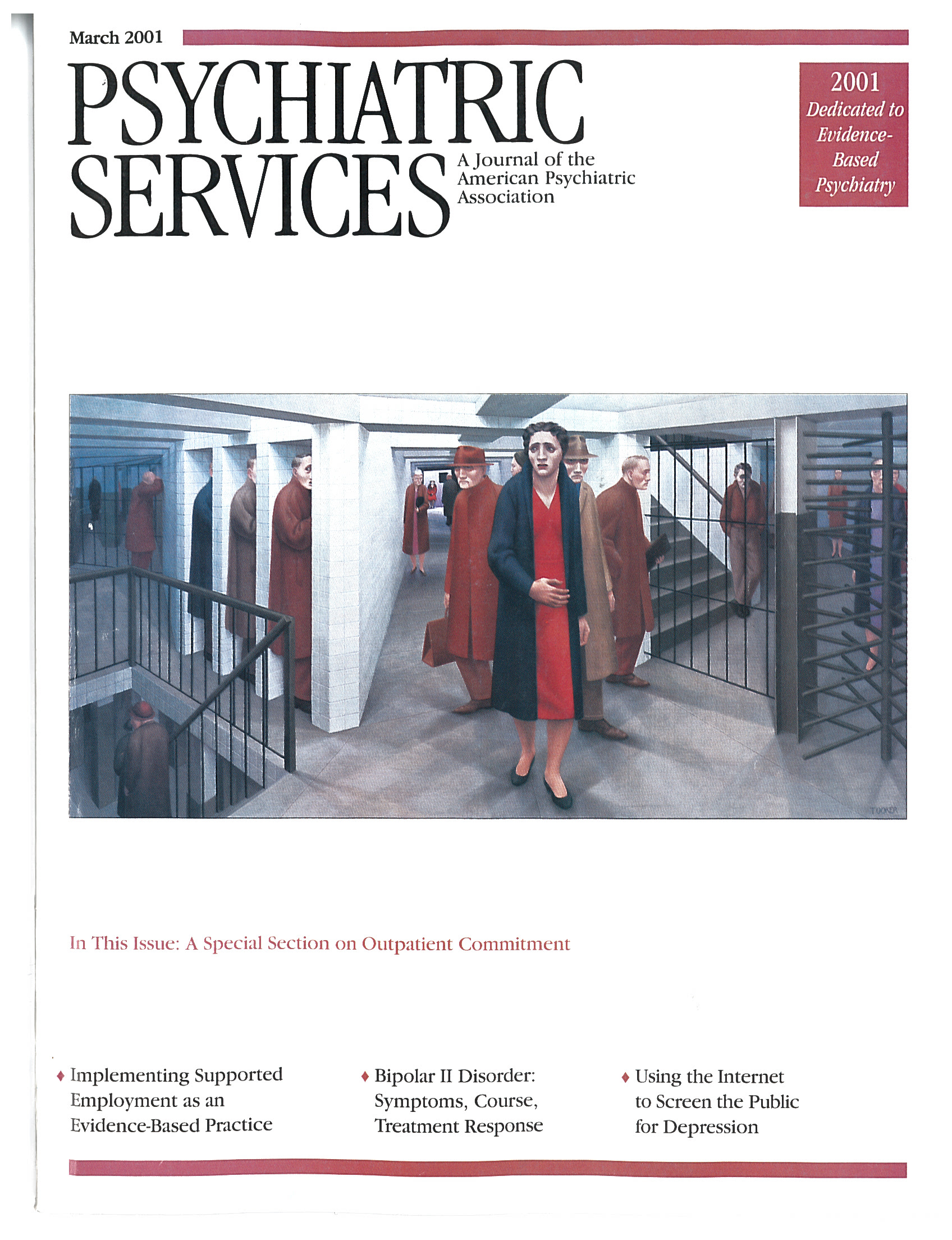The Paradox of Command Hallucinations
To the Editor: In the study of the relationship between command hallucinations and violence by McNiel and colleagues published in the October 2000 issue (1), the authors missed an opportunity to clear up some of the confusion about command hallucinations. Contrary to McNiel's book chapter on hallucinations and violence (2), there is convincing empirical evidence that compliance with dangerous command hallucinations is not uncommon.
Hersh and Borum (3) reviewed the empirical literature for compliance rates and found seven studies with reasonable sample sizes that reported rates between 0 and 91.7 percent for at least partial compliance with dangerous commands. The majority of the studies reported rates between the two extremes; the median rate was 43 percent. However, to our knowledge, no study has found a higher rate of actual violence for persons experiencing command hallucinations. Rudnick (4), for example, identified seven controlled studies between 1987 and 1997 of the association between command hallucinations and violence and concluded that all seven supported the absence of any relationship. McNiel and associates (1) might have noted that until now we have been left with the paradox that compliance with dangerous command hallucinations is an accepted reality, but its occurrence does not lead to an increase in the actual rate of violence.
The finding of McNiel and colleagues (1) that command hallucinations do not have an association with violence independent of the psychotic symptoms subscale of the Psychiatric Epidemiology Research Interview (PERI) may be partly an artifact of the command hallucinations variable being entered into the logistic regression analysis twice—once as present or absent and once as the score for the hallucination item in the PERI, which reads "How often have you heard things that other people say they can't hear?" That item should have been removed before the score on the psychotic symptoms subscale was entered.
That said, the finding is consistent with speculations that delusions mediate the association between hallucinations and violence. For example, Swanson and colleagues (5) analyzed data from the Epidemiologic Catchment Area study for associations between violence and delusions, hallucinations, and schizophrenia and found that neither hallucinations nor schizophrenia had an independent association with violence in the past year. However, the presence of delusions increased the risk of violence by a factor of 2.6, and the simultaneous presence of both delusions and hallucinations increased the risk of violence by a factor of 4.1. McNiel and associates (1) could have conducted additional analyses of the delusion items in the psychotic symptoms subscale to assess this potential mediation. Our own research has suggested that a reliable indicator of a delusional context for a particular command hallucination may be the assignment of an identity to the hallucinated voice, which in turn seems to be associated with compliance.
Our final comment concerns the distinction between the direct and indirect influences of command hallucinations on violence. A direct or causal influence cannot be inferred without first determining whether the patients' violent behavior was consistent with the content of his or her hallucinations—in other words, whether the patient complied with the specifics of the commands. In the absence of this determination, command hallucinations become just one more patient characteristic with an ill-defined association with violence.
Dr. Junginger is principal investigator on the Hawaii jail diversion project for the Hawaii Department of Health in Kaneohe. Dr. McGuire is a postdoctoral fellow in the department of psychiatry at Ohio State University in Columbus.
1. McNiel DE, Eisner JP, Binder RL: The relationship between command hallucinations and violence. Psychiatric Services 51:1288-1292, 2000Link, Google Scholar
2. McNiel DE: Hallucinations and violence, in Violence and Mental Disorder: Developments in Risk Assessment. Edited by Monahan J, Steadman H. Chicago, University of Chicago Press, 1994Google Scholar
3. Hersh K, Borum R: Command hallucinations, compliance, and risk assessment. Journal of the American Academy of Psychiatry and the Law 26:353-359, 1998Medline, Google Scholar
4. Rudnick A: Relation between command hallucinations and dangerous behavior. Journal of the American Academy of Psychiatry and the Law 27:252-257, 1999Google Scholar
5. Swanson J, Borum R, Swartz M, et al: Psychotic symptoms and disorders and risk of violent behaviour in the community. Criminal Behaviour and Mental Health 6:309-329, 1996Crossref, Google Scholar



